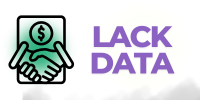Jonathan then gives us the golden rules for successfully implementing RLSA strategies:
- Have broad lists (so that statistics are reliable);
- Implement on all campaigns;
- Use “Auction Only” (to have bid adjustments to maximize your presence).
Note: In the new AdWords interface, “Bidding Only” has been replaced with “Observations.”
Jonathan then gives us some additional advice. It’s best to start with fairly high bids, if only to see if they work. By testing for one to three weeks, you can then analyze and adjust your bids upwards or downwards. Testing will allow you to refine your audiences and adjust your bids.
He also invites us to use Google Smart Bidding, a tool that automatically sets click prices based on the bids you are going to offer.
To go further, you can add new, broader, more generic keywords.
Jonathan gives us a special SEMrush tip. In the Domain Analysis report : To develop generic keyword lists, add competitor names and use the resulting list for people who have already converted.
Also use the “If” function on AdWords: if the visitor is known, I display a text; if it is not known, I display another text. For example: offer a discount coupon for the first purchase to those who are not your customers. Or “Free delivery” for visitors who have abandoned the cart.
Personalize the messages!
This is an area that requires a lot of work, refinement and constant adjustment.
YouTube supports RLSA. You can use all YouTube insights (channel visits, channel subscriptions, likes on a channel video, comments, and video shares). This allows you to see, among other things, whether YouTube is having an impact on your advertising campaigns.
Jonathan then explains to us how to use different types of data provided by Google.
Demographics
Google provides you with the age and gender groups of your visitors. Using examples, Jonathan demonstrates that conversion costs vary greatly depending on age. It’s therefore important to adjust your bids based on this information. This saves money and allows you to attract more traffic.
Quick tip: 18-24 year olds often have the lowest cost per conversion.
Similar user
When you add visitors to your RLSA list, AdWords looks at their search activity over a short period of time just before they land on your site. Based on the keywords they typed immediately beforehand, Google determines which visitors came to your site and which didn’t. These visitors are referred to as “similars” by Google.
For example, those who come to a hotel website by typing “Hotel in Dallas” may have also typed “Place to stay in Dallas” or “Best hotel in Dallas,” and Google will provide you with those who entered such queries and did not arrive on your site.
Lists can be more or less qualified: if you take those similar to people who have bought from you, you will get the most qualified list.
Here are some examples of similar audiences that may be of interest:
- Similar to non-converts who spent more than two minutes on the site;
- Similar to non-converters who visited more than three pages on the site;
- Similar to newsletter subscribers;
- Similar to high average basket customers;
- Similar to Cart Abandonments;
- Similar to the Intelligence List (list automatically created by Google).
Jonathan reveals that similar audiences represent 5 to 10% of his clients’ spending.
Customer Match
Customer Match allows you to use your CRM data to target your online customers. You can send the following data to Google:
- Email;
- Phone ;
- First name & last name;
- Postal Code & City;
- Mobile device ID.
You will arrive at a match rate between 50 and 80% (the difference is explained by whether you put the phone on or not).
Google tries to spot emails that go together (between the Google account and your CRM).
Then you provide this list to Google, and then you will be able to segment this list to create different audience strategies.
For example, you can divide customers into active and non-active, and then divide active customers into:
- Loyalty card holder;
- New customer;
- Promotional period customers only (fairly high proportion among fashion customers).
We will only target the latter, for example, during sales or very interesting promotions.
But above all, we must not forget non-customers. You can divide them into:
- Subscribed to the newsletter;
- Request for information;
- Create an account without purchasing.
These people need to be targeted with different messages, or even different bids.
